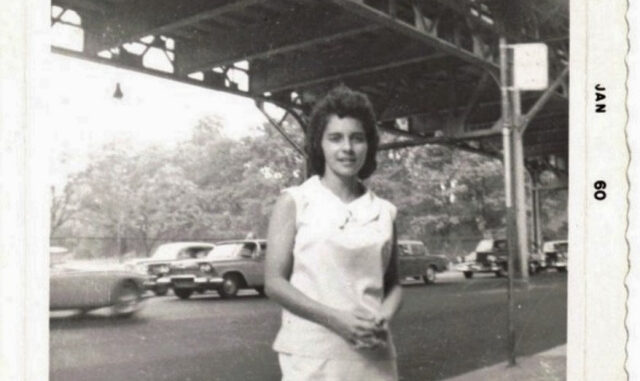
In the spring of 1960, as American homes flickered with the glow of after-school television, a letter arrived at the American Bandstand studio. It was folded neatly inside a floral-patterned envelope, handwritten in careful cursive, and addressed not to a host or producer—but to a dancer. A quiet girl with a signature flip hairstyle and graceful rhythm: Arlene Sullivan.
The sender, Mrs. Lillian M. from Des Moines, Iowa, was a widow and mother of three. Her letter would go on to be read not just once, but many times within the Bandstand studio. It would remind the staff—and Arlene herself—that what they did wasn’t just entertainment. It was healing.
A Daughter Who Went Silent
Lillian’s letter didn’t begin with fanfare. It began with grief:
“My daughter Amy was never still before. She danced down hallways, she sang in the car. And after her father passed, all of that stopped.”
Amy was 14. Her father had passed away the previous fall. Since then, Lillian wrote, the house had become too quiet, too heavy. The music had been turned off. The laughter had faded. And Amy, once a lively girl, now mostly kept to herself.
But there was one exception: every weekday afternoon, when American Bandstand came on.
“When Arlene appears on screen, Amy sits a little straighter. Her eyes follow every movement. Sometimes I catch her smiling, just barely. And once—I’ll never forget it—I saw her toe tapping.”
Arlene’s Quiet Grace
Arlene Sullivan wasn’t the flashiest dancer on the show. She didn’t perform dramatic moves or draw attention with bold expressions. But that’s what made her special. Her style was understated, elegant, steady. Her movements had a softness that felt safe. Comforting.
For Amy, that kind of presence was exactly what she needed. In Arlene, she didn’t see someone perfect. She saw someone calm. Someone who moved with purpose, but never rushed. Someone who let the music guide her gently—not overwhelm her.

“I think Arlene reminded my daughter of who she was before she lost her dad,” Lillian wrote. “She didn’t bring back the old Amy overnight. But she gave her a reason to move again.”
The First Dance Back
The letter continued with a moment that Lillian said made her cry quietly in the kitchen:
“I was drying dishes when I heard a soft thump behind me. I turned and there she was—Amy, in her socks, turning in slow circles, arms out like she was holding someone invisible. There was no music playing. But she was dancing.”
Lillian didn’t interrupt. She didn’t speak. She just watched.
That night, Lillian decided to write the letter.
A Dancer Who Never Knew Her Reach
When the Bandstand staff received the letter, it was passed directly to Arlene. She read it during rehearsal. She didn’t say much—just folded the paper, smiled gently, and kept it with her things.
Later, she wrote a brief note in return and signed a photo for Amy. On the back, she wrote:
“Tell Amy she’s not dancing alone. I’ll be dancing too.”
The photo and note arrived a week later. According to Lillian, Amy placed it by her mirror. And over the next few weeks, she began to dance more.
Not publicly. Not at school. But in her room. In the hallway. In the kitchen again.
A Story Passed Down
Amy is grown now, with children of her own. But she never forgot Arlene’s quiet influence. In fact, she still has the photo—slightly yellowed now—framed on a shelf in her home. Her own daughter once asked about it, and Amy told her the story. How a dancer she never met helped her find joy again.
*“Sometimes, healing doesn’t shout,” Amy says today. “Sometimes it just dances in slowly.”

Why Arlene’s Dance Still Matters
In the grand history of television, Arlene Sullivan may not have been the biggest star. But to one family in Iowa, she was the turning point. She was rhythm when life had lost its beat. She was movement when everything else felt stuck.
Her dance didn’t save the day. But it helped one girl remember that the day could still be lived.
And maybe that’s why we still remember her—not just as a dancer, but as a quiet light.
Do you remember when someone on Bandstand helped you smile again? Or maybe, like Amy, you found comfort in the grace of a stranger on screen. We’d be honored to hear your story.
 Share your story with us here:
Share your story with us here:
